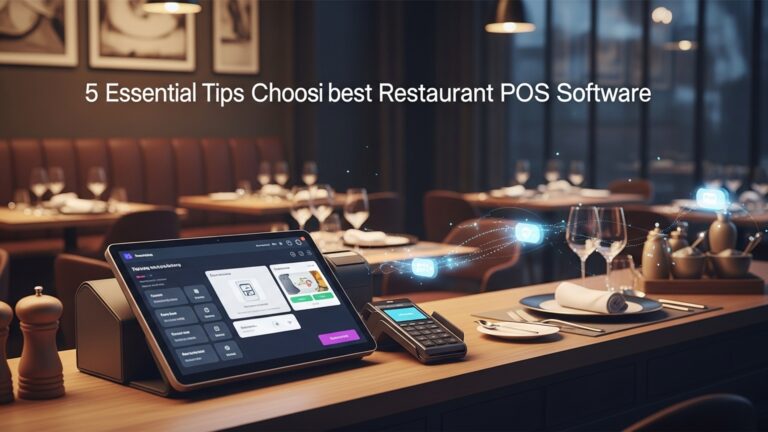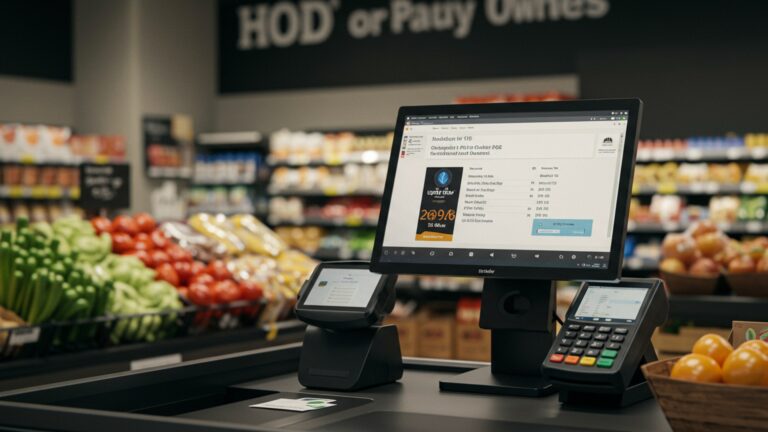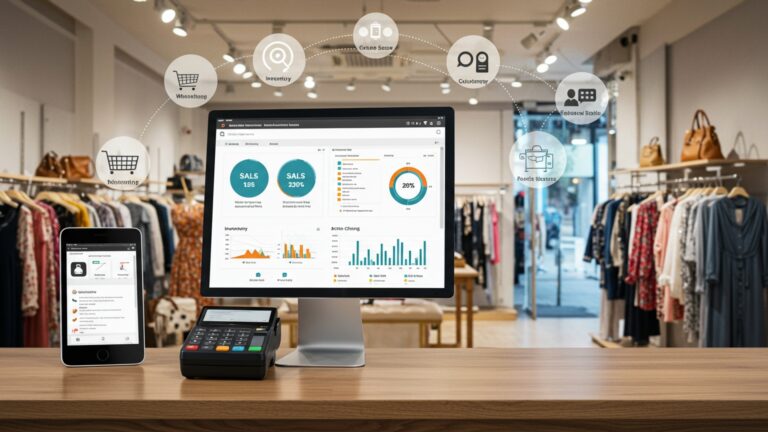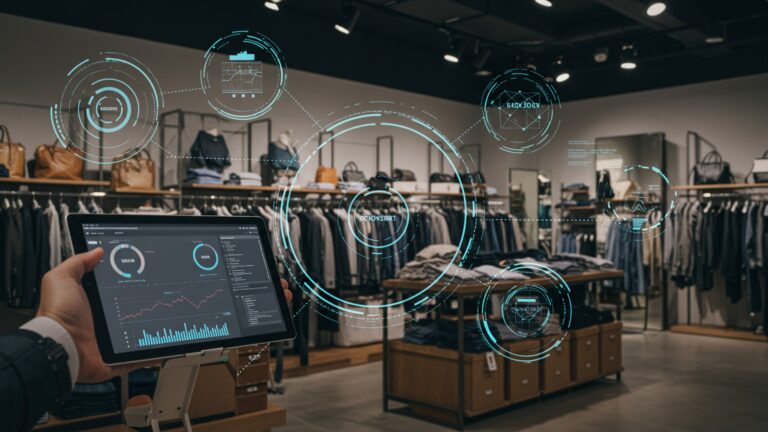How to Choose the Right Restaurant POS System 5 Key Steps
The modern restaurant landscape demands more than just processing orders; it requires seamless integration and intelligent operations to thrive amidst fluctuating supply chains and evolving guest expectations. Navigating this complexity makes selecting the optimal Restaurant POS software a critical strategic decision, far beyond merely ringing up sales. Today’s advanced systems, leveraging cloud technology and AI, empower operators with real-time inventory management, predictive analytics for staffing. even touchless QR code ordering, moving far beyond traditional terminals. Choosing the right platform means securing a competitive edge, streamlining front-of-house and back-of-house workflows. ultimately enhancing the guest experience in an increasingly digital world.
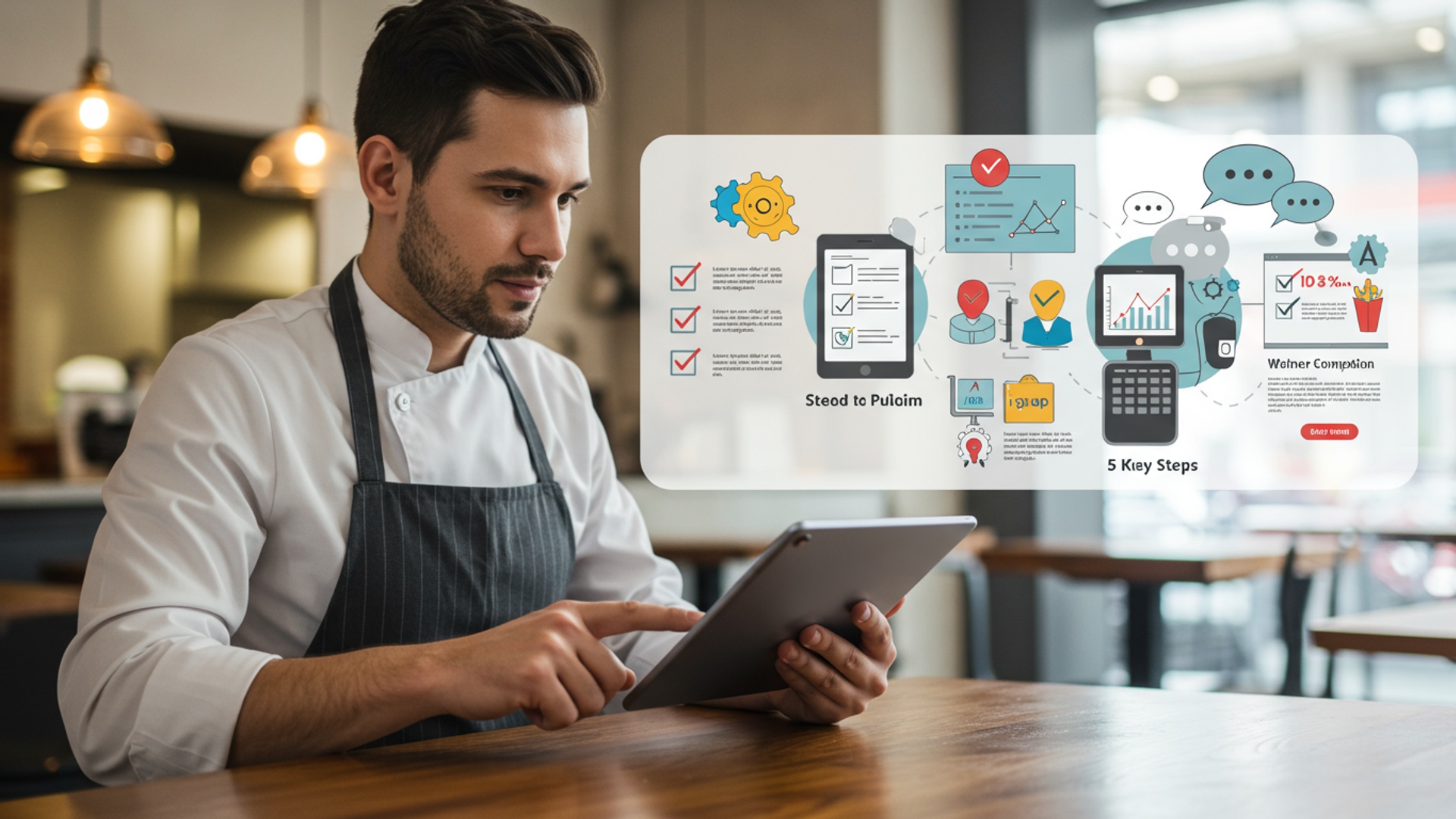
1. Assess Your Restaurant’s Unique Operational Needs
Before diving into the myriad of features offered by various Restaurant POS software systems, the foundational first step is to conduct a thorough internal assessment of your restaurant’s specific operational requirements. Every dining establishment, from a bustling fine-dining restaurant to a quick-service cafe or a multi-location chain, has distinct workflows, challenges. goals. Understanding these nuances will guide your search and prevent you from investing in a system that’s either overkill or under-equipped.
Key Areas to Consider:
- Restaurant Type and Size
- Current Pain Points
- Future Growth Plans
- Staff Workflow
Are you a full-service restaurant (FSR) with complex table management and extensive menu customization? Or a quick-service restaurant (QSR) prioritizing speed, order accuracy. drive-thru capabilities? A small cafe might need simple order entry and payment processing, while a large chain will demand robust inventory management, multi-location reporting. centralized control.
Identify what’s currently slowing down your operations. Is it manual order taking errors, slow payment processing, difficult inventory tracking, or a lack of real-time sales data? Pinpointing these issues will help you prioritize features that offer direct solutions. For example, a restaurant struggling with high food waste might prioritize Restaurant POS software with advanced inventory controls.
Think about where you want your business to be in 3-5 years. Are you planning to open new locations, expand into catering, or launch an online delivery service? Your chosen POS system should be scalable enough to accommodate these future expansions without requiring a complete overhaul.
Observe how your front-of-house (FOH) and back-of-house (BOH) staff operate. Do they need handheld devices for tableside ordering? Is a Kitchen Display System (KDS) essential for efficient order fulfillment? How will your servers, bartenders. kitchen staff interact with the system?
Gather your management team and key staff members. Brainstorm a comprehensive list of “must-have” features, “nice-to-have” features. “deal-breaker” limitations based on your current and future operational needs. This list will be your compass in the selection process for any Restaurant POS software.
2. grasp Core POS Features and Beyond
A Point of Sale (POS) system is the central nervous system of any modern restaurant, handling transactions and much more. While the basic function of processing orders and payments remains core, contemporary Restaurant POS software offers a wealth of advanced features that can significantly enhance efficiency, customer experience. profitability. Understanding these capabilities is crucial for making an informed decision.
Core POS Functionality:
- Order Management
- Payment Processing
- Sales Reporting and Analytics
- Employee Management
This includes intuitive menu customization, modifiers (e. g. , “no onions,” “extra cheese”), split checks, table management. seamless order sending to the kitchen or bar.
Ability to accept various payment methods (credit/debit cards, mobile payments like Apple Pay/Google Pay, gift cards), secure transaction processing. often integrated EMV chip card readers. Look for PCI compliance to ensure data security.
Real-time access to sales data, peak hours, popular menu items, server performance. void/discount tracking. Robust reporting helps in making data-driven decisions.
Time clock functionality, shift scheduling, payroll integration. permission-based access controls to different POS features.
Advanced Features to Consider:
- Inventory Management
- Customer Relationship Management (CRM) & Loyalty Programs
- Online Ordering & Delivery Integration
- Kitchen Display Systems (KDS)
- Multi-Location Management
Track ingredients, monitor stock levels, set reorder points, manage suppliers. reduce waste. This is particularly vital for controlling food costs. A good system can integrate with scales or even automatically deduct ingredients from stock as dishes are sold.
Capture customer data, track preferences, offer loyalty points. run targeted promotions to encourage repeat business. Some systems allow for personalized marketing campaigns.
Seamlessly integrate with your website for direct online orders or connect with third-party delivery platforms (e. g. , DoorDash, Uber Eats) to consolidate orders into one system, reducing manual entry errors and streamlining operations.
Digital screens in the kitchen display orders, prioritize prep, track cooking times. communicate between FOH and BOH, replacing paper tickets and improving efficiency.
For chains, this enables centralized menu management, inventory control, reporting. staff management across all outlets.
A busy pizzeria owner, previously struggling with incorrect orders and long wait times due to handwritten tickets, implemented a Restaurant POS software with an integrated KDS. Orders now flow directly from the server’s handheld device to the kitchen screen, eliminating errors and significantly reducing ticket times, leading to happier customers and more efficient staff.
Prioritize features based on your Step 1 assessment. Don’t pay for features you don’t need. also don’t compromise on essential functionalities that will streamline your specific operations. Create a checklist of features and rate their importance for your business.
3. Evaluate Scalability and Integration Capabilities
The best Restaurant POS software isn’t just about meeting your current needs; it’s about future-proofing your business. As your restaurant grows and the technological landscape evolves, your POS system must be able to adapt. This requires careful consideration of its scalability and its ability to integrate with other critical business tools.
Scalability: Growing with Your Business
Scalability refers to the system’s ability to handle an increasing workload or expand its functionality without a significant drop in performance or a complete system overhaul. Consider these aspects:
- Transactions and Users
- Menu Expansion
- Multi-Location Support
- Hardware Expansion
Can the system comfortably handle a higher volume of transactions during peak hours or accommodate more users (e. g. , if you add more servers or open another location)?
How easy is it to add new menu items, categories, or implement seasonal changes?
If growth means opening new branches, can the Restaurant POS software centrally manage menus, inventory, pricing. reporting across all locations? This avoids the headache of disparate systems and ensures consistency.
Can you easily add more terminals, handheld devices, kitchen printers, or KDS screens as needed without compatibility issues?
Integration Capabilities: Connecting Your Ecosystem
Modern restaurants rely on a suite of specialized tools beyond just the POS. Seamless integration between your POS and these other systems is vital for efficiency and accurate data flow. Look for a Restaurant POS software that offers robust APIs (Application Programming Interfaces) or pre-built integrations with common restaurant software.
- Accounting Software
- Online Ordering & Delivery Platforms
- Reservation Systems
- Employee Scheduling Software
- Loyalty & Marketing Platforms
Integration with platforms like QuickBooks, Xero, or Sage streamlines financial reporting, payroll. tax preparation by automatically feeding sales data.
As mentioned, direct integration reduces manual entry and ensures all orders, regardless of origin, flow through a single system.
For FSRs, linking with reservation platforms (e. g. , OpenTable, Resy) can provide a holistic view of customer data, from booking to ordering history.
Integration can help manage labor costs by connecting actual sales data with projected staffing needs.
Ensures customer data is consistent across all touchpoints, enabling more effective personalized marketing.
An API (Application Programming Interface) is a set of rules and protocols that allows different software applications to communicate and exchange data with each other. A robust API ecosystem means your chosen Restaurant POS software can “talk” to many other applications.
| Integration Type | Benefit | Example |
|---|---|---|
| Accounting Software | Automated financial data transfer, reduced manual errors, streamlined bookkeeping. | Sales data from POS automatically populates daily revenue in QuickBooks. |
| Online Delivery | Consolidate orders from multiple platforms, unified menu management, improved order accuracy. | DoorDash orders appear directly on the KDS and POS, avoiding re-entry. |
| Reservation Systems | Comprehensive customer profiles, improved table management, personalized guest experiences. | Guest notes from OpenTable visible on POS during service. |
List all other software your restaurant currently uses or plans to use. During demos, explicitly ask potential Restaurant POS software providers about their integration partners and API capabilities. Look for a system that acts as a central hub for your entire restaurant technology ecosystem.
4. Consider Hardware, Software. Support
Choosing a Restaurant POS software system isn’t just about the software itself; it involves selecting the right hardware and ensuring reliable support. These three components work in tandem to create a robust and efficient operational environment.
Software Deployment: Cloud-Based vs. On-Premise
This is a fundamental decision that impacts cost, accessibility. maintenance.
- Cloud-Based POS (SaaS – Software as a Service)
- How it works
- Pros
- Cons
- On-Premise POS
- How it works
- Pros
- Cons
The software and data are hosted on remote servers by the vendor and accessed via the internet using a web browser or app.
Lower upfront costs (subscription model), automatic updates, remote accessibility (manage your business from anywhere), data backup and security handled by the vendor, easier scalability.
Requires a stable internet connection, potential reliance on vendor’s uptime, subscription fees can add up over time.
Software is installed directly on your restaurant’s local servers and computers.
Full control over your data, no reliance on internet connection for core operations, one-time purchase fee (typically).
Higher upfront investment (servers, licenses), you’re responsible for maintenance, updates. data security, limited remote access, potential for outdated software if updates aren’t managed.
Most new restaurants, especially those prioritizing flexibility and lower initial capital expenditure, are opting for cloud-based Restaurant POS software due to its accessibility and continuous updates. A multi-location chain like “Flavor Fusion Bistro” uses a cloud POS to manage menus and promotions centrally across all its branches, accessing real-time sales data from home.
Hardware Considerations:
The physical components of your POS system are equally essential for smooth operations.
- POS Terminals
- Payment Devices
- Printers
- Cash Drawers
- Kitchen Display Systems (KDS)
- Handheld Devices
Touchscreen monitors are standard. Consider durability, screen size. ease of use.
EMV chip readers, NFC (Near Field Communication) readers for contactless payments. magnetic stripe readers. Ensure they are PCI compliant.
Thermal receipt printers for customers and impact printers for the kitchen (more durable in hot environments).
Secure and sturdy.
As discussed, these digital screens replace paper tickets, improving kitchen efficiency.
Tablets or mobile POS (mPOS) devices allow servers to take orders tableside, speeding up service and reducing errors.
Customer Support and Training: Your Lifeline
Even the most advanced Restaurant POS software is only as good as the support behind it. Issues will inevitably arise. prompt, knowledgeable assistance is crucial to avoid downtime.
- Availability
- Support Channels
- Response Time
- Training
- Onboarding Process
Does the vendor offer 24/7 support, especially during your peak operating hours?
Phone, email, live chat, online knowledge base?
What are the guaranteed response times for critical issues?
Does the vendor provide initial training for your staff? Are there ongoing resources (tutorials, webinars) for new hires or feature updates?
How smooth is the installation and setup process? Will they assist with menu programming and data migration?
Decide on cloud-based vs. on-premise based on your budget, internet reliability. desire for control. When evaluating hardware, think about durability and ease of use in a busy restaurant environment. Most importantly, thoroughly vet the vendor’s support structure – read reviews, ask for references. grasp their service level agreements (SLAs).
5. Calculate Total Cost of Ownership (TCO) and ROI
The sticker price of a Restaurant POS software system can be deceptive. To make a truly informed decision, you need to look beyond the initial cost and calculate the Total Cost of Ownership (TCO) over several years, as well as consider the potential Return on Investment (ROI).
Understanding Total Cost of Ownership (TCO):
TCO encompasses all direct and indirect costs associated with owning and operating a POS system over its lifespan. It’s crucial to factor in these components:
- Software Costs
- Subscription Fees (Cloud-based)
- License Fees (On-premise)
- Module Costs
- Hardware Costs
- Initial purchase of terminals, printers, cash drawers, KDS, handheld devices, payment processors.
- Replacement costs (consider hardware lifespan, typically 3-5 years).
- Installation and Setup
- Professional installation fees.
- Network infrastructure setup (cabling, routers, Wi-Fi access points).
- Menu programming and data migration.
- Training Costs
- Initial staff training by the vendor or internal staff.
- Ongoing training for new hires or feature updates.
- Payment Processing Fees
- Transaction fees, interchange fees, monthly gateway fees. These can vary significantly between providers and add up quickly.
- Be wary of providers who offer “free” hardware but lock you into high processing rates.
- Support and Maintenance
- Ongoing monthly or annual support plans.
- On-premise systems may incur costs for IT support, server maintenance. security updates.
- Miscellaneous Costs
- Internet service provider fees.
- Consumables like receipt paper rolls.
Monthly or annual fees per terminal or location.
Upfront cost for software licenses.
Fees for additional features like advanced inventory, loyalty programs, or online ordering.
Calculating Return on Investment (ROI):
ROI quantifies the financial benefits you expect to gain from your investment in Restaurant POS software. While some benefits are tangible, others are harder to measure but equally crucial.
- Tangible ROI
- Reduced Labor Costs
- Lower Food Waste
- Increased Sales
- Reduced Errors
- Improved Reporting
- Intangible ROI
- Improved customer satisfaction and loyalty.
- Enhanced employee morale and productivity.
- Better brand reputation.
- Reduced stress for management.
- Increased security and PCI compliance.
Faster order taking, automated time tracking. improved scheduling efficiency.
Accurate inventory management leads to less spoilage and better portion control.
Faster service, better customer experience, effective loyalty programs. seamless online ordering can boost revenue.
Eliminating manual processes minimizes order mistakes, voids. payment discrepancies.
Data-driven insights lead to better menu engineering, optimized staffing. smarter purchasing.
A restaurant owner invests $5,000 in a new cloud-based Restaurant POS software system (hardware + 1 year subscription). Over the first year, they experience a 10% reduction in food waste (saving $2,000), a 5% increase in average check size due to upselling features (generating an extra $3,000 in profit). a 15% reduction in order errors (saving $500 in comps). The total tangible benefit is $5,500. Their ROI would be: ($5,500 – $5,000) / $5,000 = 10% ROI in the first year, not including the intangible benefits.
Always request a detailed, itemized quote from each vendor, covering all potential costs. Create a spreadsheet to compare TCO over a 3-5 year period for each option. Project the potential savings and revenue increases to estimate your ROI, justifying the investment and ensuring you choose a system that delivers real value to your restaurant.
Conclusion
Choosing the right restaurant POS system, guided by those crucial five steps, isn’t merely a technical decision; it’s a strategic investment in your establishment’s future. Don’t simply compare feature lists; actively envision how each system handles your unique operational flow, from seamless online ordering integration to rapid table-side payments, especially with the current trend towards diverse fulfillment channels. My personal tip is to always prioritize robust, responsive customer support – a system’s true worth often reveals itself during a critical Saturday night issue, not just in its initial demo. Take the time to truly comprehend how a system, like one offering advanced inventory tracking or real-time sales analytics, can adapt and scale with your growth, rather than becoming an outdated bottleneck. This informed decision empowers you to streamline operations, enhance customer experiences. ultimately boost your bottom line. You’re not just buying software; you’re forging a partnership that will drive efficiency and innovation. Embrace this opportunity. propel your restaurant into a more profitable and organized future.
More Articles
How to Choose the Right Restaurant POS 6 Crucial Steps for Success
Avoid These 6 Common Mistakes When Implementing New Restaurant POS Software Solutions
10 Essential Restaurant POS Features Every Owner Needs to Master
The Ultimate Guide 8 Key Benefits of Modern Restaurant POS Software
How to Identify the Best Restaurant POS System Features for Success
FAQs
What’s the very first step to choosing a restaurant POS?
Start by figuring out exactly what your restaurant needs. Think about your size, type of service (table service, quick service, delivery), current pain points. what features would genuinely make your operations smoother. Don’t just look at fancy features; focus on what solves your specific problems and fits your workflow.
What are some essential features a good restaurant POS should have?
Beyond basic order taking and payment processing, look for features like table management, inventory tracking, employee management (time clock, scheduling), detailed reporting. menu customization. If you do delivery or online orders, make sure it can handle those too, perhaps with integrated online ordering modules.
How much should I budget for a new POS system?
POS costs vary a lot. You’ll need to consider hardware (terminals, printers, card readers), software subscriptions (monthly or yearly). potentially installation or training fees. Don’t just look at the upfront price; factor in the total cost of ownership over a few years. Sometimes a slightly higher monthly fee for better features and support is a better investment in the long run.
My restaurant might expand in the future. Can a POS system grow with me?
Absolutely! Look for a system that’s scalable. This means it can easily add more terminals, users, or even multiple locations without a complete overhaul. Cloud-based systems often offer better scalability as they’re generally easier to expand and manage across different sites than traditional on-premise setups.
Is it crucial for the POS to integrate with my other restaurant software?
Yes, very! Seamless integration with other tools like accounting software, online ordering platforms, loyalty programs, or reservation systems can save you tons of time and prevent data entry errors. It creates a more connected and efficient ecosystem for your business, allowing data to flow smoothly between different platforms.
What kind of customer support should I expect from a POS provider?
Good support is crucial, especially when things go wrong during a busy shift. Look for providers who offer 24/7 support, multiple contact methods (phone, chat, email). a good reputation for quick, helpful responses. Training resources for your staff are also a big plus, as smooth onboarding is key to adoption.
Should I go for a cloud-based or an on-premise POS system?
Most modern restaurants opt for cloud-based systems. They offer more flexibility, lower upfront hardware costs, automatic updates. remote access to your data from anywhere. On-premise systems require more initial investment and IT management. some prefer them for full control over data and less reliance on constant internet connectivity. Weigh the pros and cons based on your specific operational needs and tech comfort.


